If we look at a typical building’s lifespan of sixty years and graph total carbon emissions – embodied and operational – the operational energy over time has a larger impact. Reducing operational energy is the most effective strategy to reduce overall carbon emissions over a sixty year building lifespan.
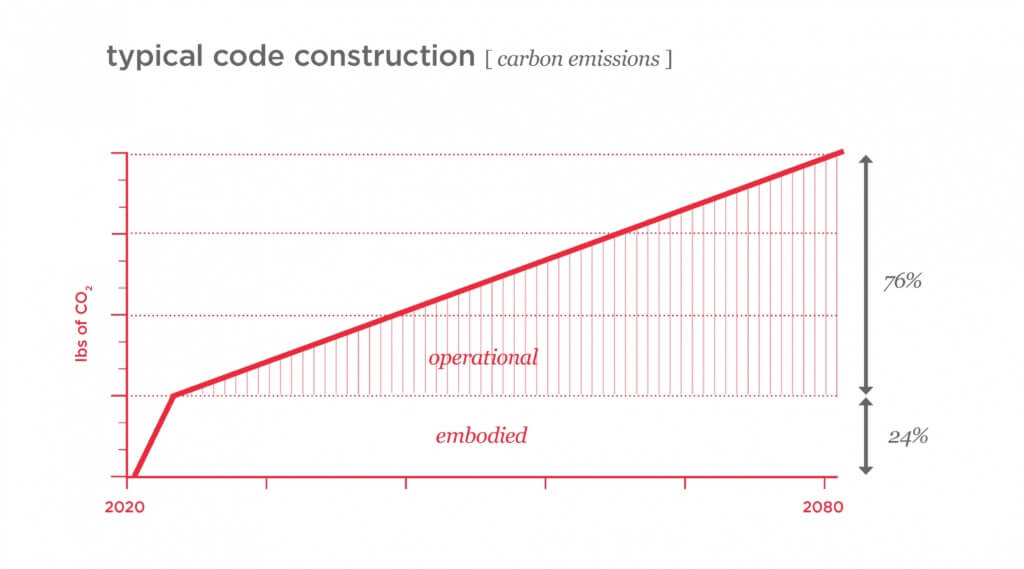
Historically PAYETTE and the industry in general have focused more on the reduction of operational energy than embodied because operational energy has a larger impact over the life of the building.
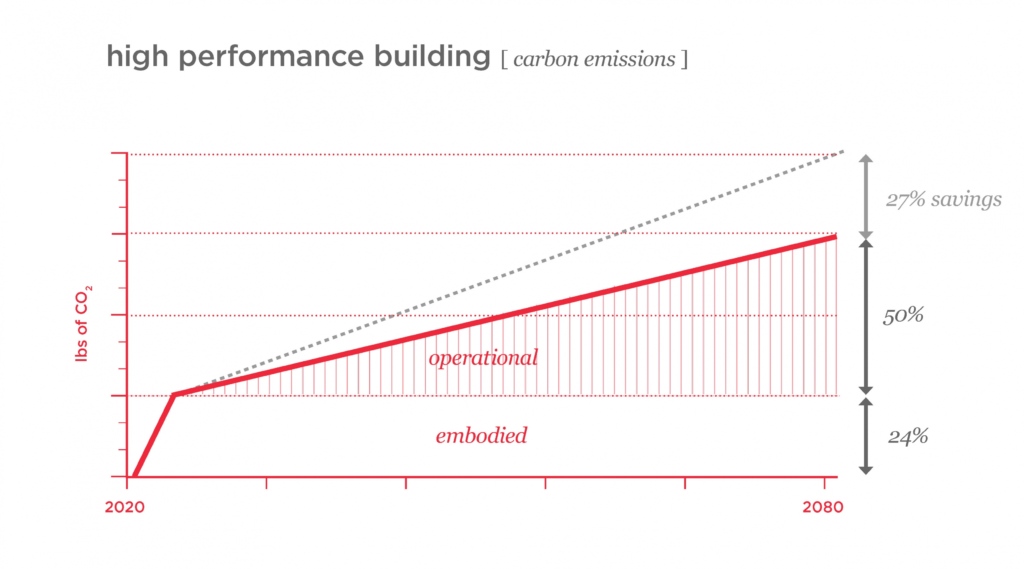

However, as explained in the last post on carbon, there is greater urgency to reduce carbon between now and 2030 in order to stay below 1.5°C. There is a “time value” to cutting carbon emissions at a faster rate than over the past 40 years due to the need to avert the catastrophic impact of climate change. If we look at the carbon emissions over that shorter time period to 2030, it tells a much different story.
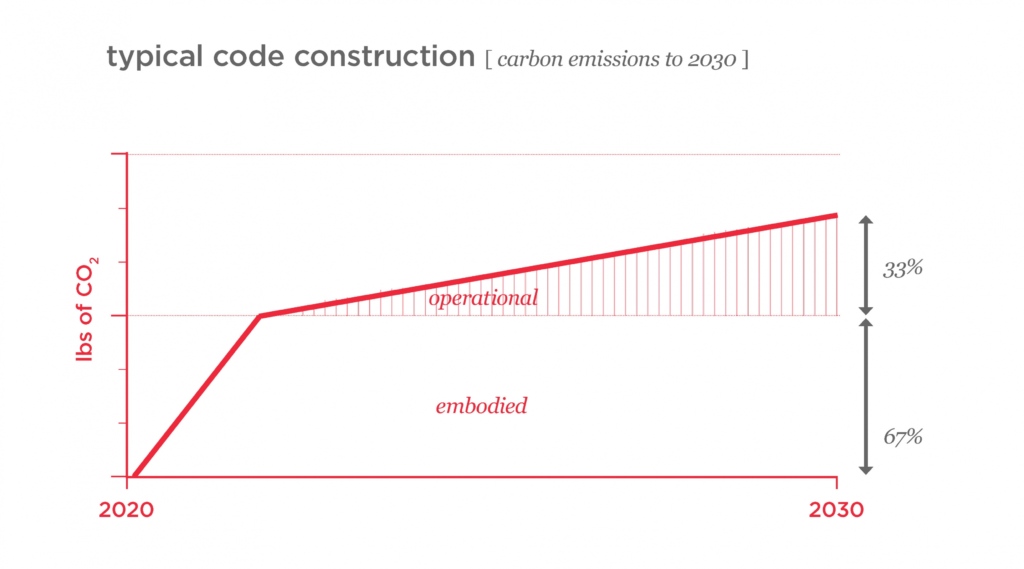
We can now see that reducing embodied energy will have the greatest impact on overall carbon emissions. While it is imperative to design high performance (or even better, net-zero energy!) projects, we must simultaneously address the materials we are building with in order to contribute towards the 50% reduction in global carbon emissions we need achieve by 2030. As a team working on new buildings, the greatest source of the emissions in that time period will likely come from the embodied carbon, so it is imperative to focus on reducing those emissions now.
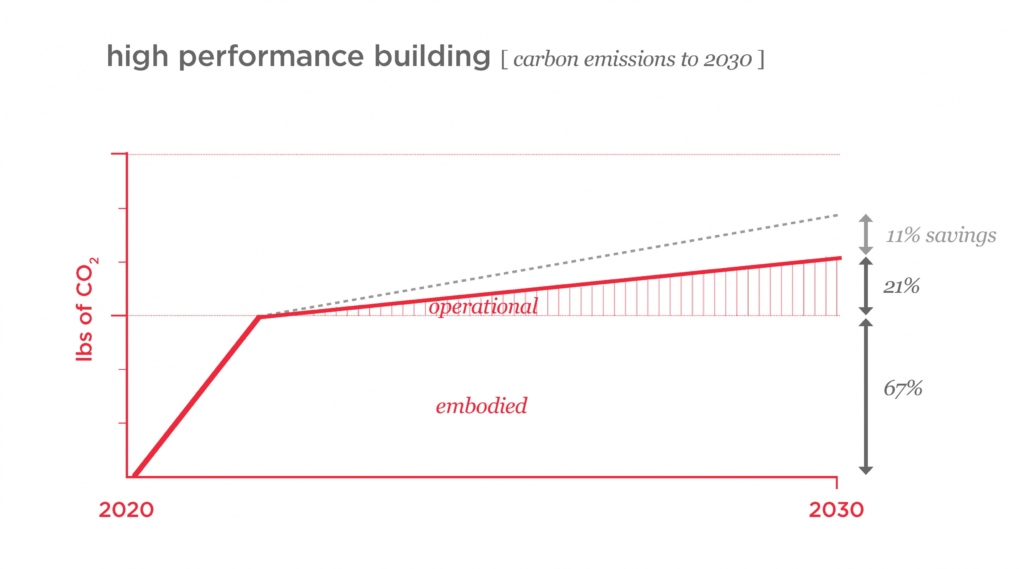
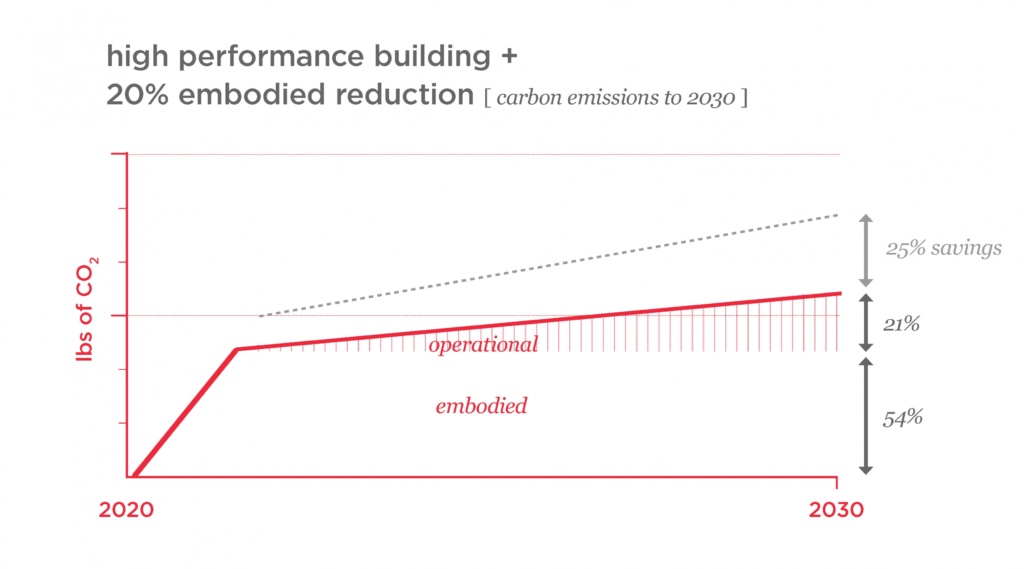
Architects and designers need to consider the impact that their material choices have – we can no longer wait and rely solely on high performance buildings. High performance design needs to include low embodied carbon. Buildings account for 40% of global emissions*; our choices matter, and we can make a difference.
*Source: Global Alliance for Buildings and Construction. 2018 Global Status Reports



